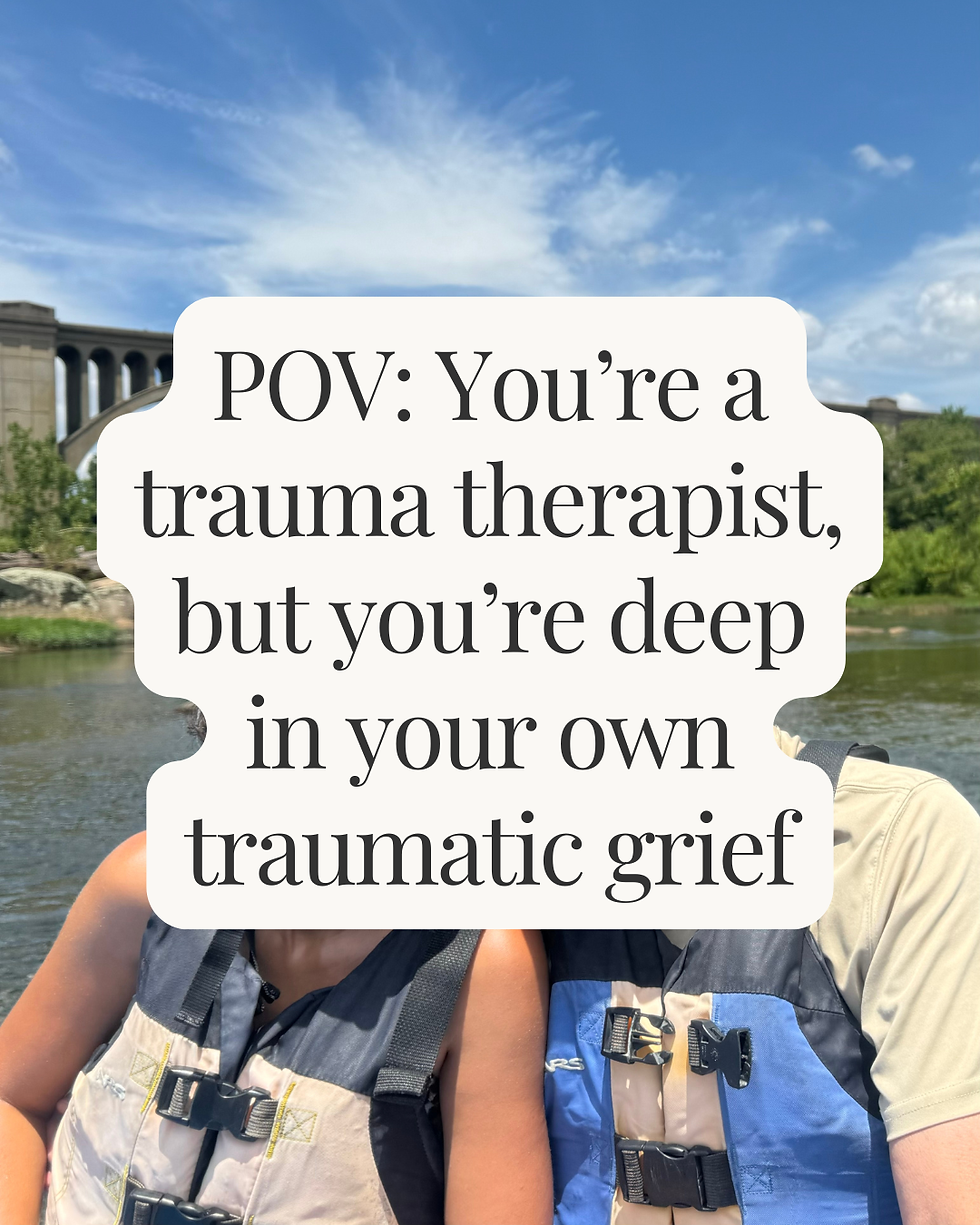Trauma- What is it really?
- Adrienne Loker

- Feb 22, 2020
- 3 min read
Updated: Apr 1, 2025
Before I give away my therapist definition, grab a pen and write your definition of trauma here: ____________________________________________________________. Now, reread your answer. How did you come up with this? My favorite definition of trauma is borrowed from the Eye Movement Desensitization and Reprocessing International Association, a governing body of a powerful trauma intervention (you can find out more about them at EMDRIA.org): “A trauma is an experience that causes a person to develop erroneous beliefs about self or the world and may cause behaviors that are not skillful or effective in the present.”

Trauma can be understood in two different classifications, however there is no competition when it comes to trauma, all traumas are equally valid and painful. Big “T” traumas are the traumas that we typically think of when such a word is tossed around. These are directly experiencing or witnessing immediately life threatening events, such as a car accident, an armed robbery, or active war. The next classification is called little “t” traumas, not because they are less than, but because one time is not a huge deal, but over and over again causes similar brain changes as Big “T”. These are repeated assaults on our esteem, such as shaming, bullying, neglect, or inconsistent parenting.
Research shows that 70% of Americans will experience a trauma within their lifetime, and 20% of these will go on to develop Post Traumatic Stress Disorder (PTSD Alliance, 2018). Further research, and my clinical belief, is that many other mental health diagnoses and medical ailments are symptoms of underlying trauma, including Depression, Attention Deficit Hyperactivity Disorder, Bipolar, Borderline Personality Disorder, Anxiety, Panic Disorder, Narcissism, Obsessive Compulsive Disorder, Fibromyalgia, some seizure disorders, and more.
Common symptoms of trauma, regardless of Big “T” or little “t”, include: loss of a sense of “who I am”, being easily startled, difficulty sleeping, difficulty concentrating, worthlessness, loss of interest, chronic pain, negative self-thoughts, minimization of the trauma, impaired short term or long term memory, mistrust of others, depression, hopelessness, avoiding things that bring up anxiety/panic or otherwise remind of a known trauma, perfectionism, caretaking, over indulgence in alcohol/drugs/or behaviors that release an excess of dopamine, shame/guilt, mood swings, feeling like your body doesn’t belong to you or like you’re disconnected from your environment, intrusive thoughts, loss of a sense of the future, flashbacks, and more.
Our brains process information from the bottom to the top. To borrow from Dan Siegel, think of it like a house. We need to start with the downstairs, put in the framework, the subfloor, the kitchen, the main water shut off, everything we need for our house to function. This is our survival brain. It is completely automatic and processes everything about our environment before we are even consciously aware of it. This part of our brain maintains internal body temperature, regulates heart rate, and determines friend or foe before our upstairs brain, our prefrontal cortex (which is responsible for language, logic, perspective taking, emotional regulation, and future orientation) even has the chance to weigh in. Our downstairs brain, our amygdala, is responsible for our fight/flight/freeze response, it also stores our implicit trauma memories. By this I mean that it stores all the images, sensations, and emotions from terrifying events that we were never able to put words to. Whether or not we were old enough to utilize our words during such events, the part of our brain that is responsible for language commonly shuts down during trauma.
Because memories are not factually based, but rather are emotionally stored associative networks, these memories that are trapped in the amygdala (implicit memories, since they cannot be recalled with language), become the foundation for which we view the world, ourselves, and others. Such examples include, “the world isn’t safe”, “I can’t trust myself”, “I’m not good enough”, or “I have to be perfect”. Many people argue this, asserting, “that was in the past, I’ve put that behind me!” But the reality is, unless we’ve truly processed all aspects of an event and have really felt all of our feelings about it, then the past is actually present, just not with words.
Going back to our original definition of trauma, “an experience that causes a person to develop erroneous beliefs about self or the world and may cause behaviors that are not skillful or effective in the present,” symptoms manifest in negative self-beliefs and worldviews as well as self-defeating behaviors. Just as our body communicates when we’re hungry, when we’re tired, and when we’re thirsty, our body also communicates when we’re lonely, when we’re happy, and when we’re traumatized. There are many powerful tools for overcoming and thriving after trauma. EMDR, Somatic Experiencing, Brainspotting, Psychodrama, and Ego State work are all effective strategies to integrate implicit memories into the prefrontal cortex and install a feeling of safety in the body.
.png)



Comments